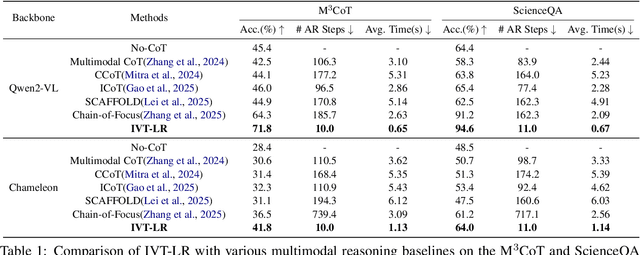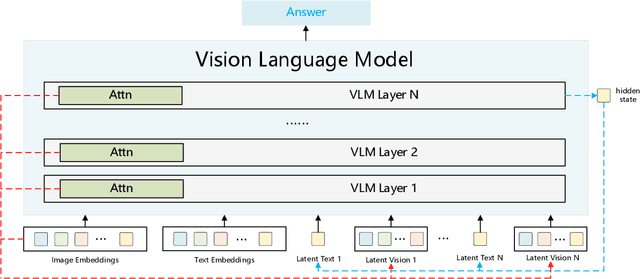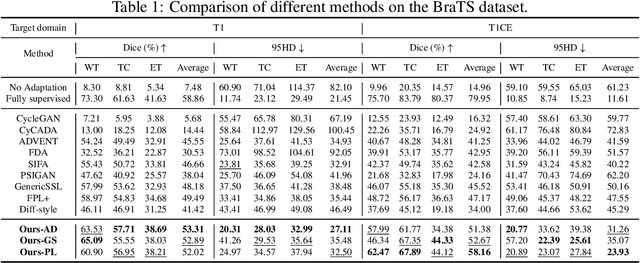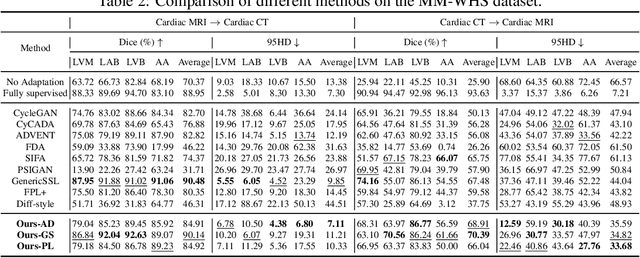Chao Chen
Robotics Institute, University of Michigan, Ann Arbor
Heteroscedastic Bayesian Optimization-Based Dynamic PID Tuning for Accurate and Robust UAV Trajectory Tracking
Dec 30, 2025Abstract:Unmanned Aerial Vehicles (UAVs) play an important role in various applications, where precise trajectory tracking is crucial. However, conventional control algorithms for trajectory tracking often exhibit limited performance due to the underactuated, nonlinear, and highly coupled dynamics of quadrotor systems. To address these challenges, we propose HBO-PID, a novel control algorithm that integrates the Heteroscedastic Bayesian Optimization (HBO) framework with the classical PID controller to achieve accurate and robust trajectory tracking. By explicitly modeling input-dependent noise variance, the proposed method can better adapt to dynamic and complex environments, and therefore improve the accuracy and robustness of trajectory tracking. To accelerate the convergence of optimization, we adopt a two-stage optimization strategy that allow us to more efficiently find the optimal controller parameters. Through experiments in both simulation and real-world scenarios, we demonstrate that the proposed method significantly outperforms state-of-the-art (SOTA) methods. Compared to SOTA methods, it improves the position accuracy by 24.7% to 42.9%, and the angular accuracy by 40.9% to 78.4%.
* Accepted by IROS 2025 (2025 IEEE/RSJ International Conference on Intelligent Robots and Systems)
MambaSeg: Harnessing Mamba for Accurate and Efficient Image-Event Semantic Segmentation
Dec 30, 2025Abstract:Semantic segmentation is a fundamental task in computer vision with wide-ranging applications, including autonomous driving and robotics. While RGB-based methods have achieved strong performance with CNNs and Transformers, their effectiveness degrades under fast motion, low-light, or high dynamic range conditions due to limitations of frame cameras. Event cameras offer complementary advantages such as high temporal resolution and low latency, yet lack color and texture, making them insufficient on their own. To address this, recent research has explored multimodal fusion of RGB and event data; however, many existing approaches are computationally expensive and focus primarily on spatial fusion, neglecting the temporal dynamics inherent in event streams. In this work, we propose MambaSeg, a novel dual-branch semantic segmentation framework that employs parallel Mamba encoders to efficiently model RGB images and event streams. To reduce cross-modal ambiguity, we introduce the Dual-Dimensional Interaction Module (DDIM), comprising a Cross-Spatial Interaction Module (CSIM) and a Cross-Temporal Interaction Module (CTIM), which jointly perform fine-grained fusion along both spatial and temporal dimensions. This design improves cross-modal alignment, reduces ambiguity, and leverages the complementary properties of each modality. Extensive experiments on the DDD17 and DSEC datasets demonstrate that MambaSeg achieves state-of-the-art segmentation performance while significantly reducing computational cost, showcasing its promise for efficient, scalable, and robust multimodal perception.
CoCo-MILP: Inter-Variable Contrastive and Intra-Constraint Competitive MILP Solution Prediction
Nov 12, 2025Abstract:Mixed-Integer Linear Programming (MILP) is a cornerstone of combinatorial optimization, yet solving large-scale instances remains a significant computational challenge. Recently, Graph Neural Networks (GNNs) have shown promise in accelerating MILP solvers by predicting high-quality solutions. However, we identify that existing methods misalign with the intrinsic structure of MILP problems at two levels. At the leaning objective level, the Binary Cross-Entropy (BCE) loss treats variables independently, neglecting their relative priority and yielding plausible logits. At the model architecture level, standard GNN message passing inherently smooths the representations across variables, missing the natural competitive relationships within constraints. To address these challenges, we propose CoCo-MILP, which explicitly models inter-variable Contrast and intra-constraint Competition for advanced MILP solution prediction. At the objective level, CoCo-MILP introduces the Inter-Variable Contrastive Loss (VCL), which explicitly maximizes the embedding margin between variables assigned one versus zero. At the architectural level, we design an Intra-Constraint Competitive GNN layer that, instead of homogenizing features, learns to differentiate representations of competing variables within a constraint, capturing their exclusionary nature. Experimental results on standard benchmarks demonstrate that CoCo-MILP significantly outperforms existing learning-based approaches, reducing the solution gap by up to 68.12% compared to traditional solvers. Our code is available at https://github.com/happypu326/CoCo-MILP.
From Attribution to Action: Jointly ALIGNing Predictions and Explanations
Nov 10, 2025Abstract:Explanation-guided learning (EGL) has shown promise in aligning model predictions with interpretable reasoning, particularly in computer vision tasks. However, most approaches rely on external annotations or heuristic-based segmentation to supervise model explanations, which can be noisy, imprecise and difficult to scale. In this work, we provide both empirical and theoretical evidence that low-quality supervision signals can degrade model performance rather than improve it. In response, we propose ALIGN, a novel framework that jointly trains a classifier and a masker in an iterative manner. The masker learns to produce soft, task-relevant masks that highlight informative regions, while the classifier is optimized for both prediction accuracy and alignment between its saliency maps and the learned masks. By leveraging high-quality masks as guidance, ALIGN improves both interpretability and generalizability, showing its superiority across various settings. Experiments on the two domain generalization benchmarks, VLCS and Terra Incognita, show that ALIGN consistently outperforms six strong baselines in both in-distribution and out-of-distribution settings. Besides, ALIGN also yields superior explanation quality concerning sufficiency and comprehensiveness, highlighting its effectiveness in producing accurate and interpretable models.
Interact-RAG: Reason and Interact with the Corpus, Beyond Black-Box Retrieval
Oct 31, 2025Abstract:Retrieval-Augmented Generation (RAG) has significantly enhanced LLMs by incorporating external information. However, prevailing agentic RAG approaches are constrained by a critical limitation: they treat the retrieval process as a black-box querying operation. This confines agents' actions to query issuing, hindering its ability to tackle complex information-seeking tasks. To address this, we introduce Interact-RAG, a new paradigm that elevates the LLM agent from a passive query issuer into an active manipulator of the retrieval process. We dismantle the black-box with a Corpus Interaction Engine, equipping the agent with a set of action primitives for fine-grained control over information retrieval. To further empower the agent on the entire RAG pipeline, we first develop a reasoning-enhanced workflow, which enables both zero-shot execution and the synthesis of interaction trajectories. We then leverage this synthetic data to train a fully autonomous end-to-end agent via Supervised Fine-Tuning (SFT), followed by refinement with Reinforcement Learning (RL). Extensive experiments across six benchmarks demonstrate that Interact-RAG significantly outperforms other advanced methods, validating the efficacy of our reasoning-interaction strategy.
Interpret Policies in Deep Reinforcement Learning using SILVER with RL-Guided Labeling: A Model-level Approach to High-dimensional and Multi-action Environments
Oct 22, 2025Abstract:Deep reinforcement learning (RL) achieves remarkable performance but lacks interpretability, limiting trust in policy behavior. The existing SILVER framework (Li, Siddique, and Cao 2025) explains RL policy via Shapley-based regression but remains restricted to low-dimensional, binary-action domains. We propose SILVER with RL-guided labeling, an enhanced variant that extends SILVER to multi-action and high-dimensional environments by incorporating the RL policy's own action outputs into the boundary points identification. Our method first extracts compact feature representations from image observations, performs SHAP-based feature attribution, and then employs RL-guided labeling to generate behaviorally consistent boundary datasets. Surrogate models, such as decision trees and regression-based functions, are subsequently trained to interpret RL policy's decision structure. We evaluate the proposed framework on two Atari environments using three deep RL algorithms and conduct human-subject study to assess the clarity and trustworthiness of the derived interpretable policy. Results show that our approach maintains competitive task performance while substantially improving transparency and human understanding of agent behavior. This work advances explainable RL by transforming SILVER into a scalable and behavior-aware framework for interpreting deep RL agents in high-dimensional, multi-action settings.
Reasoning in the Dark: Interleaved Vision-Text Reasoning in Latent Space
Oct 14, 2025



Abstract:Multimodal reasoning aims to enhance the capabilities of MLLMs by incorporating intermediate reasoning steps before reaching the final answer. It has evolved from text-only reasoning to the integration of visual information, enabling the thought process to be conveyed through both images and text. Despite its effectiveness, current multimodal reasoning methods depend on explicit reasoning steps that require labor-intensive vision-text annotations and inherently introduce significant inference latency. To address these issues, we introduce multimodal latent reasoning with the advantages of multimodal representation, reduced annotation, and inference efficiency. To facilicate it, we propose Interleaved Vision-Text Latent Reasoning (IVT-LR), which injects both visual and textual information in the reasoning process within the latent space. Specifically, IVT-LR represents each reasoning step by combining two implicit parts: latent text (the hidden states from the previous step) and latent vision (a set of selected image embeddings). We further introduce a progressive multi-stage training strategy to enable MLLMs to perform the above multimodal latent reasoning steps. Experiments on M3CoT and ScienceQA demonstrate that our IVT-LR method achieves an average performance increase of 5.45% in accuracy, while simultaneously achieving a speed increase of over 5 times compared to existing approaches. Code available at https://github.com/FYYDCC/IVT-LR.
Flexible and Efficient Spatio-Temporal Transformer for Sequential Visual Place Recognition
Oct 05, 2025Abstract:Sequential Visual Place Recognition (Seq-VPR) leverages transformers to capture spatio-temporal features effectively; however, existing approaches prioritize performance at the expense of flexibility and efficiency. In practice, a transformer-based Seq-VPR model should be flexible to the number of frames per sequence (seq-length), deliver fast inference, and have low memory usage to meet real-time constraints. To our knowledge, no existing transformer-based Seq-VPR method achieves both flexibility and efficiency. To address this gap, we propose Adapt-STformer, a Seq-VPR method built around our novel Recurrent Deformable Transformer Encoder (Recurrent-DTE), which uses an iterative recurrent mechanism to fuse information from multiple sequential frames. This design naturally supports variable seq-lengths, fast inference, and low memory usage. Experiments on the Nordland, Oxford, and NuScenes datasets show that Adapt-STformer boosts recall by up to 17% while reducing sequence extraction time by 36% and lowering memory usage by 35% compared to the second-best baseline.
MATCH: Multi-faceted Adaptive Topo-Consistency for Semi-Supervised Histopathology Segmentation
Oct 02, 2025



Abstract:In semi-supervised segmentation, capturing meaningful semantic structures from unlabeled data is essential. This is particularly challenging in histopathology image analysis, where objects are densely distributed. To address this issue, we propose a semi-supervised segmentation framework designed to robustly identify and preserve relevant topological features. Our method leverages multiple perturbed predictions obtained through stochastic dropouts and temporal training snapshots, enforcing topological consistency across these varied outputs. This consistency mechanism helps distinguish biologically meaningful structures from transient and noisy artifacts. A key challenge in this process is to accurately match the corresponding topological features across the predictions in the absence of ground truth. To overcome this, we introduce a novel matching strategy that integrates spatial overlap with global structural alignment, minimizing discrepancies among predictions. Extensive experiments demonstrate that our approach effectively reduces topological errors, resulting in more robust and accurate segmentations essential for reliable downstream analysis. Code is available at \href{https://github.com/Melon-Xu/MATCH}{https://github.com/Melon-Xu/MATCH}.
Bézier Meets Diffusion: Robust Generation Across Domains for Medical Image Segmentation
Sep 26, 2025



Abstract:Training robust learning algorithms across different medical imaging modalities is challenging due to the large domain gap. Unsupervised domain adaptation (UDA) mitigates this problem by using annotated images from the source domain and unlabeled images from the target domain to train the deep models. Existing approaches often rely on GAN-based style transfer, but these methods struggle to capture cross-domain mappings in regions with high variability. In this paper, we propose a unified framework, B\'ezier Meets Diffusion, for cross-domain image generation. First, we introduce a B\'ezier-curve-based style transfer strategy that effectively reduces the domain gap between source and target domains. The transferred source images enable the training of a more robust segmentation model across domains. Thereafter, using pseudo-labels generated by this segmentation model on the target domain, we train a conditional diffusion model (CDM) to synthesize high-quality, labeled target-domain images. To mitigate the impact of noisy pseudo-labels, we further develop an uncertainty-guided score matching method that improves the robustness of CDM training. Extensive experiments on public datasets demonstrate that our approach generates realistic labeled images, significantly augmenting the target domain and improving segmentation performance.
 Add to Chrome
Add to Chrome Add to Firefox
Add to Firefox Add to Edge
Add to Edge